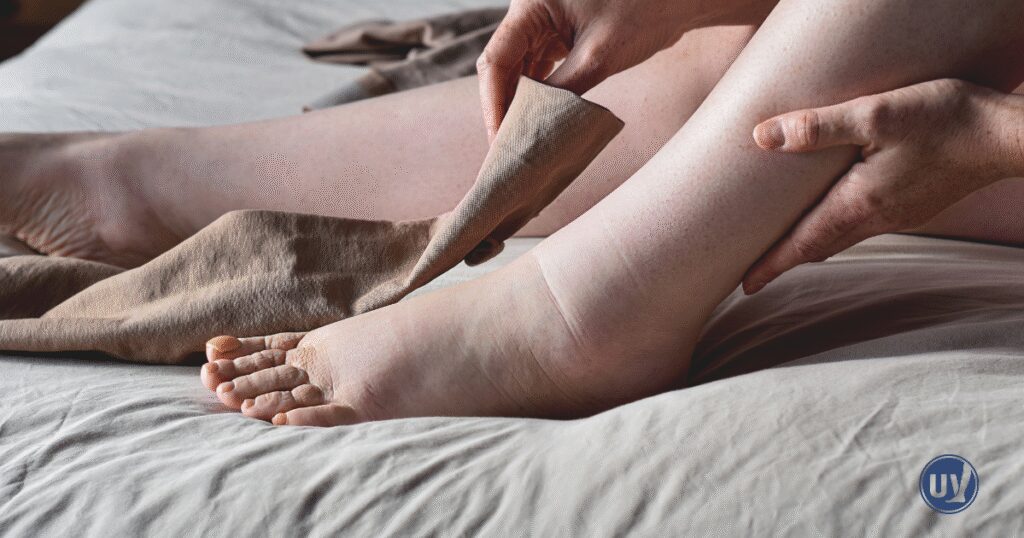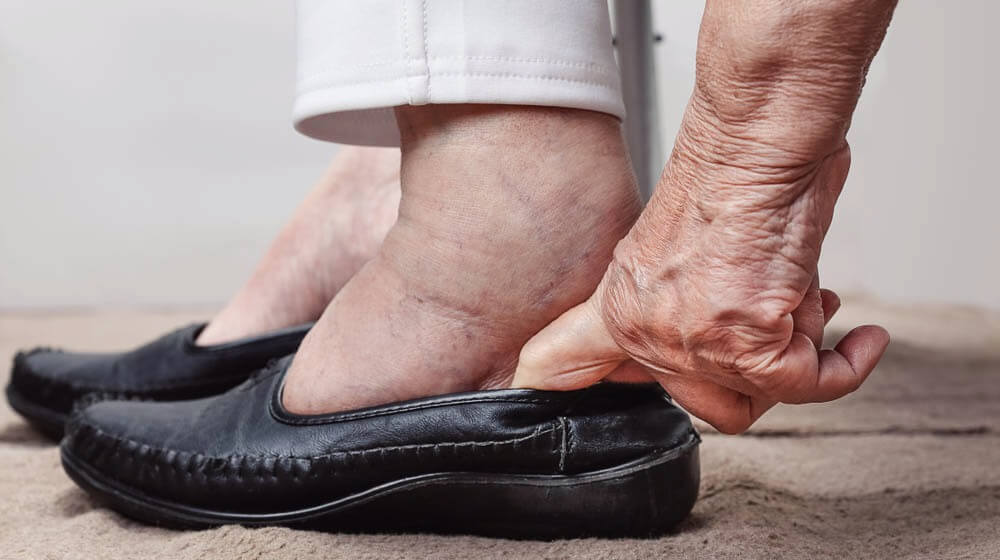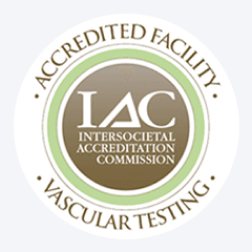Contents
- What Is Phlebolymphedema?
- How Chronic Venous Insufficiency Leads to Phlebolymphedema
- May-Thurner Syndrome: A Common Cause of Left Leg Swelling
- Daily Life With Phlebolymphedema
- Treatment Options at United Vein & Vascular Centers
- Lifestyle Strategies to Support Recovery
- When to Seek Medical Attention
- Take Action for Your Leg Health
- Frequently Asked Questions
Swelling in any leg can be concerning, especially if it develops gradually or worsens over time. While swelling in both legs can be linked to heart, kidney, or other systemic conditions, swelling in one or both legs usually points to an issue with circulation or fluid drainage in that specific limb. One of the most important causes to consider is phlebolymphedema, a condition in which vein disease leads to chronic fluid buildup in the leg.
Recognizing phlebolymphedema, understanding its causes, and knowing when to seek treatment can make a significant difference in your long-term leg health.
What Is Phlebolymphedema?
Phlebolymphedema occurs when vein disease, such as chronic venous insufficiency (CVI), damages the veins and impairs normal fluid drainage. Over time, the veins’ inability to carry blood efficiently can overwhelm the lymphatic system, leading to fluid accumulation and swelling in the leg. Unlike swelling caused purely by lymphatic issues, vein disease is the primary driver of phlebolymphedema.
This condition most often affects both legs, although one leg may swell more than the other. People with phlebolymphedema may notice persistent swelling, a feeling of heaviness, tightness in the leg, skin changes, or discomfort while walking or standing. Left untreated, phlebolymphedema can progress to skin infections, ulcers, and significant mobility challenges.
Understanding phlebolymphedema is important because it emphasizes that not all leg swelling is due to lymphatic problems. By identifying and treating vein disease early, patients can prevent long-term complications and improve quality of life.
How Chronic Venous Insufficiency Leads to Phlebolymphedema
CVI occurs when the valves in the veins of the leg no longer function properly. These valves are supposed to keep blood flowing upward toward the heart. When they weaken or fail, blood can pool in the leg veins, creating pressure that causes swelling, inflammation, discomfort, and visible varicose veins. Over time, this increased pressure can damage the lymphatic system, resulting in phlebolymphedema.
CVI is the most common cause of phlebolymphedema. Early signs may include varicose veins, swelling that worsens throughout the day or after prolonged standing, and a heavy or achy feeling in the leg. In more advanced cases, the skin may thicken, change color, or develop ulcers.
By addressing CVI, vascular specialists can often halt or reverse the progression of phlebolymphedema. This is why vein disease is considered the number one cause of this type of leg swelling. Early diagnosis and treatment not only relieve symptoms but also prevent long-term complications that can affect mobility and independence.

May-Thurner Syndrome: A Common Cause of Left Leg Swelling
Some patients notice swelling only in their left leg. One condition that explains this phenomenon is May-Thurner Syndrome, which occurs when the left iliac vein in the pelvis is compressed by the right iliac artery. This compression restricts blood flow from the left leg back to the heart, increasing pressure in the leg veins and causing swelling.
Because this condition predominantly affects the left leg, it often explains unilateral leg swelling that does not match other patterns of systemic edema. In addition to swelling, patients may experience a sensation of fullness, discomfort when walking or standing, or visible varicose veins. Over time, untreated May-Thurner Syndrome can lead to blood clots and chronic phlebolymphedema.
Early recognition is critical. Treatments such as stenting or other minimally invasive procedures can restore proper blood flow and prevent progression. Understanding the connection between vein compression and phlebolymphedema helps patients and specialists target the underlying cause rather than only managing symptoms.
Daily Life With Phlebolymphedema
Persistent swelling can affect many aspects of daily life. Walking, standing, exercising, or even sitting for long periods may become uncomfortable. Shoes may feel tight, socks may leave indentations, and clothing may not fit properly. The leg may feel heavy or tight, making routine activities more challenging.
Phlebolymphedema can also impact a person’s overall well-being. Swelling and discomfort can reduce confidence, limit mobility, and interfere with social or work activities. Addressing the underlying vein disease is crucial, as treating only the swelling may provide temporary relief but will not stop the condition from progressing. With proper care, patients often experience improved mobility, reduced discomfort, and a better quality of life.
Treatment Options at United Vein & Vascular Centers
At United Vein & Vascular Centers, our specialists focus on treating vein disease as the root cause of phlebolymphedema. For patients with chronic venous insufficiency or varicose veins, minimally invasive procedures such as endovenous laser therapy, radiofrequency ablation, VenaSeal®, or sclerotherapy can repair or close damaged veins. These treatments improve blood flow, reduce fluid buildup, and alleviate discomfort.
Compression therapy is another cornerstone of treatment. Specialized compression garments support the veins and help prevent fluid from pooling in the leg. Patients are often advised to elevate the affected leg and engage in regular walking or low-impact exercise to promote circulation and lymphatic drainage.
For patients with May-Thurner Syndrome, stenting or other interventions may be necessary to relieve vein compression and restore proper blood flow. Treatment plans are individualized based on vein health, symptom severity, and overall medical history. Early intervention is essential to prevent chronic swelling and maintain mobility.
Lifestyle Strategies to Support Recovery
Alongside medical treatments, certain lifestyle habits can help manage phlebolymphedema and improve long-term outcomes. Elevating the leg above heart level encourages fluid to return toward the heart. Regular physical activity, such as walking or low-impact exercises, promotes circulation and lymphatic function.
Compression garments should be worn consistently as recommended by a specialist to maintain pressure on the leg and prevent fluid accumulation. Maintaining a healthy weight, eating a balanced diet, and staying hydrated are additional ways to support vascular health and reduce the risk of recurrence.
Consistency in these strategies, combined with medical care, can make a significant difference in symptom management and long-term outcomes.
When to Seek Medical Attention
Seek prompt evaluation if swelling in one leg appears suddenly, worsens rapidly, or is accompanied by pain, redness, or warmth. These symptoms may indicate a blood clot, which requires immediate medical attention.
Even gradual swelling should be assessed by a vein specialist. Early diagnosis and treatment allow for more effective management, prevent complications, and help patients maintain mobility and a better quality of life.
Take Action for Your Leg Health
Phlebolymphedema is a serious condition, but it is highly manageable with targeted care. At United Vein & Vascular Centers, our specialists focus on vein disease as the root cause, helping patients reduce swelling, restore mobility, and improve comfort.
If you notice swelling in one leg or other vein-related symptoms, schedule a consultation today. Early care can help you maintain healthy legs, prevent complications, and enjoy an improved quality of life.
Frequently Asked Questions
Swelling in both legs is often caused by vein-related issues such as chronic venous insufficiency or May-Thurner Syndrome. Phlebolymphedema can develop when vein disease impairs fluid drainage.
Seek prompt care if swelling appears suddenly, worsens rapidly, or is accompanied by severe pain, redness, warmth, or fever. These could indicate a blood clot.
Treatment focuses on addressing vein disease. Options may include minimally invasive vein procedures, compression therapy, and lifestyle modifications. Early treatment improves mobility, reduces swelling, and prevents complications.


